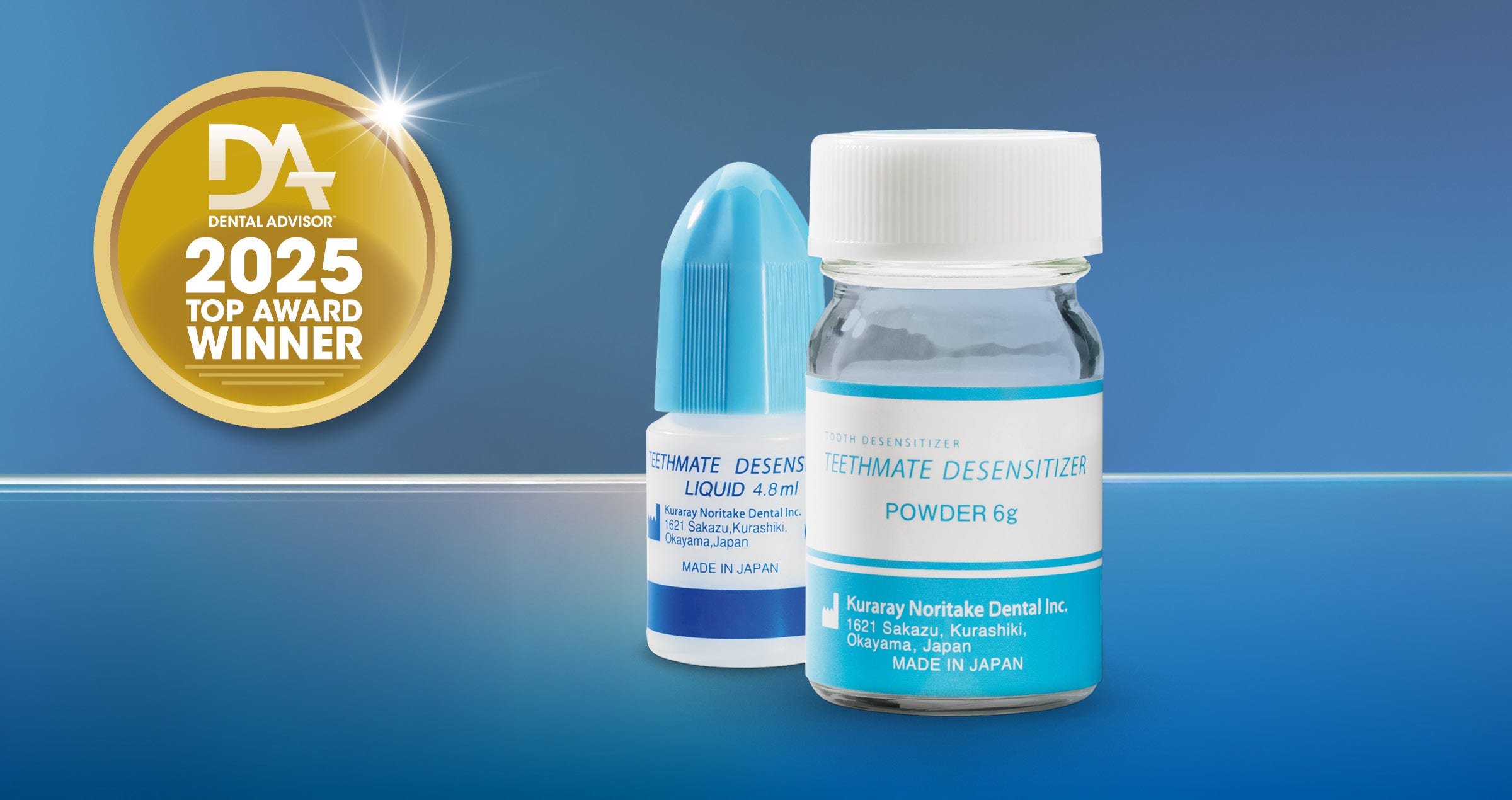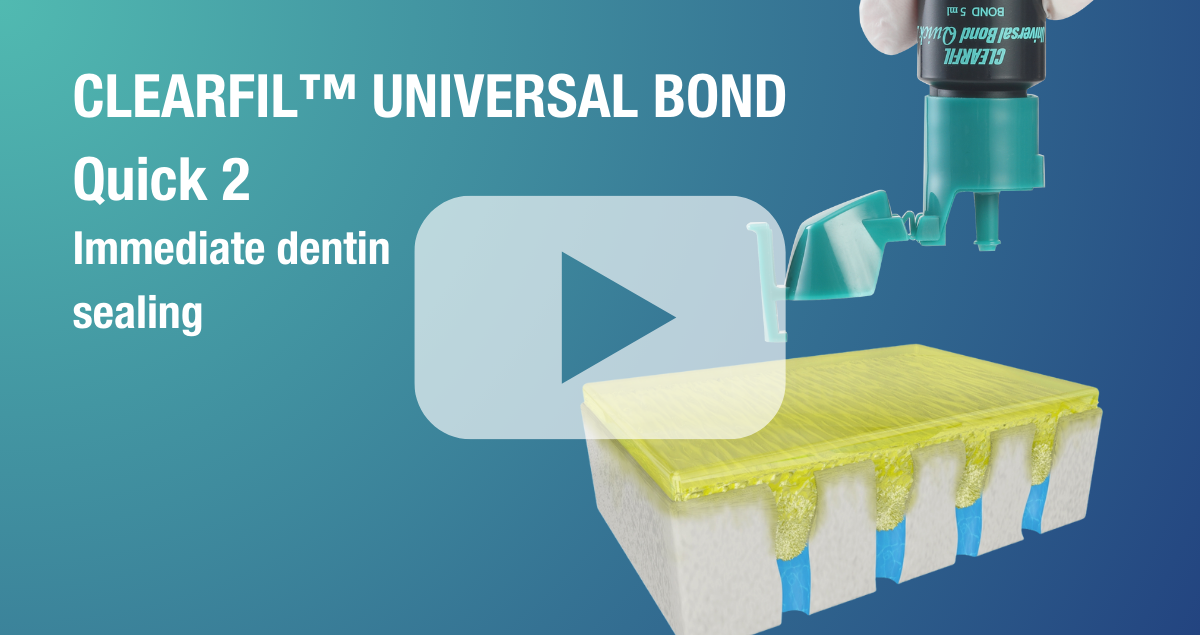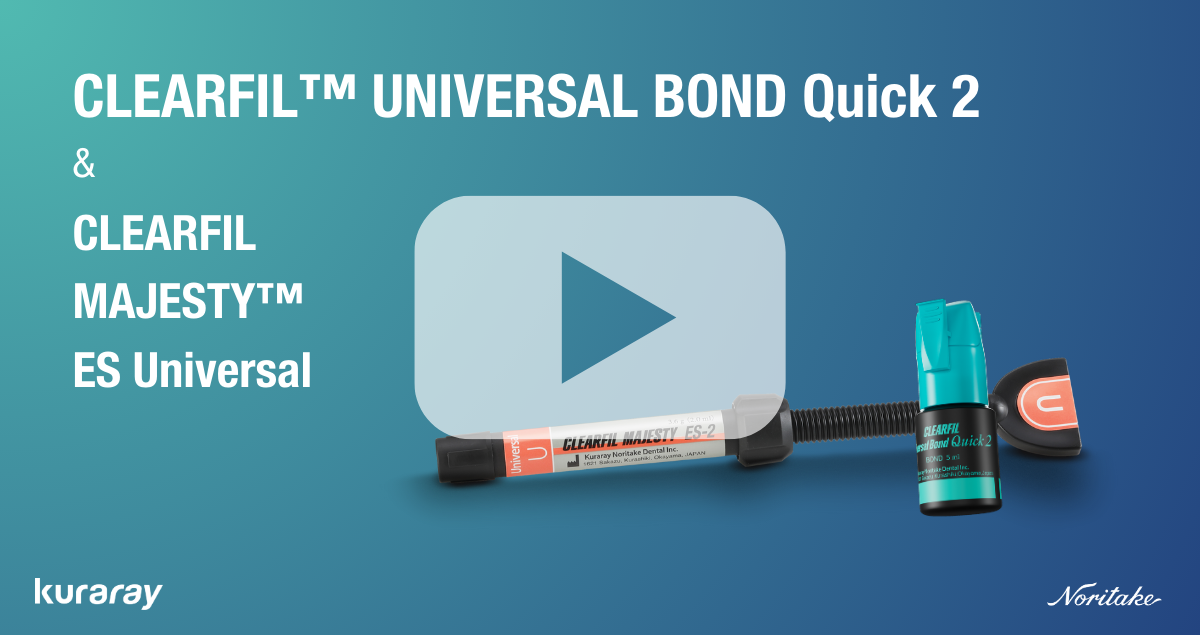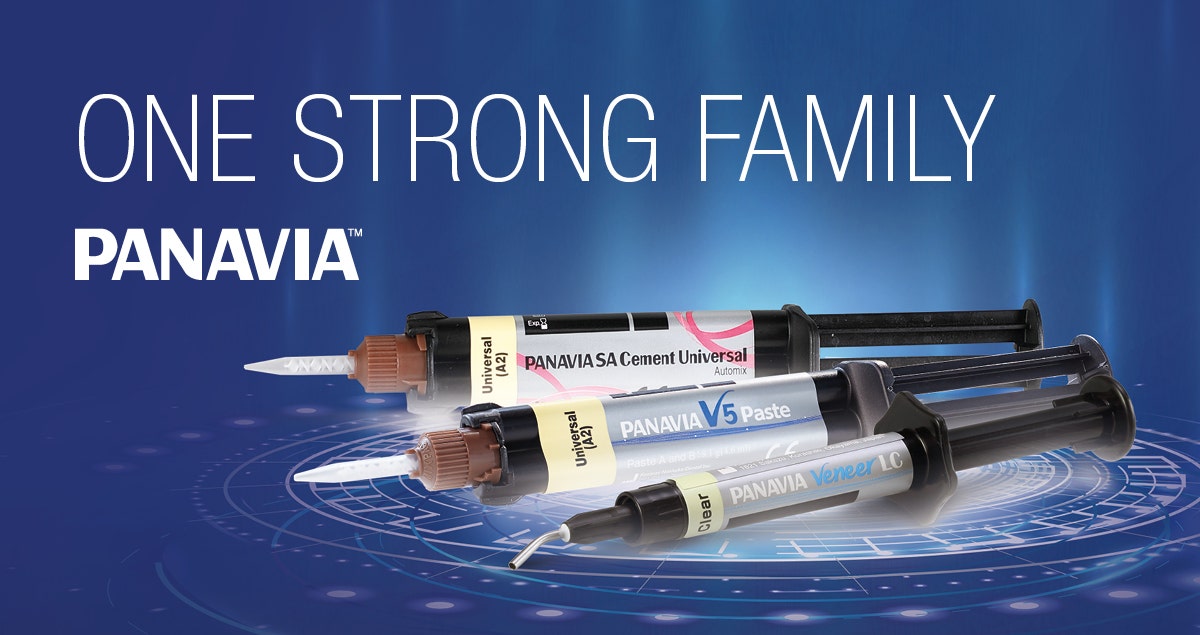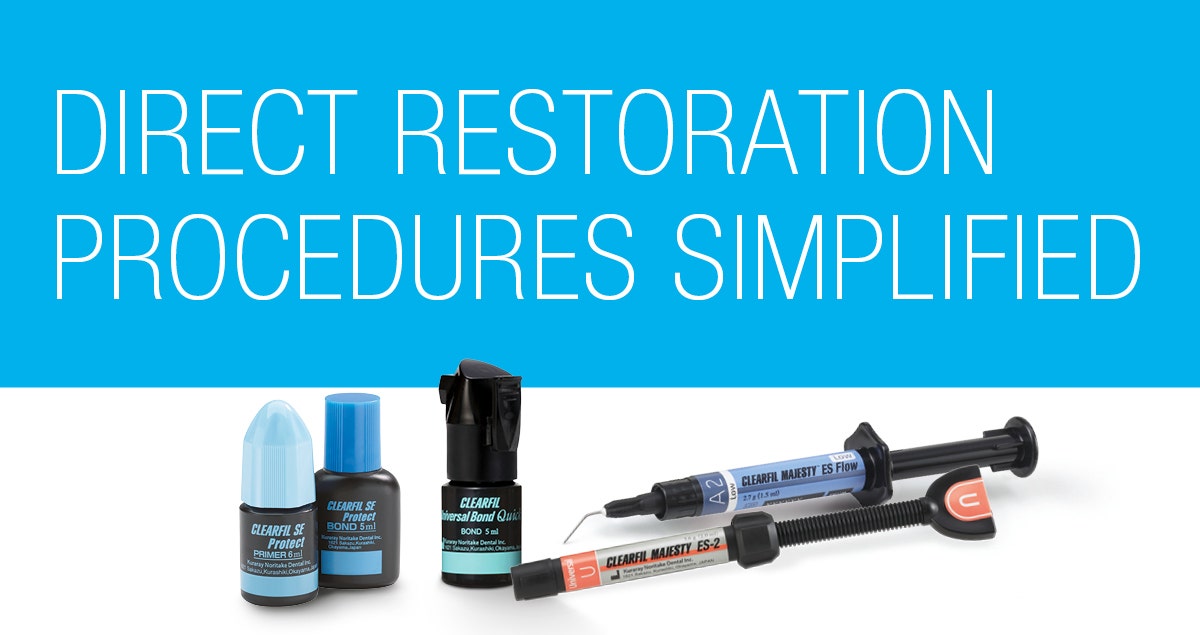PANAVIA™ SA Cement Universal
Testimonial article by Dr. Michael Teitelbaum, DMD, MAGD, FACD
A self-adhesive resin cement that contains MDP and LCSi monomers, allowing it to adhere to virtually every material without the need for a separate primer.
Ready to say goodbye to complicated bonding procedures, Dr. Michael Teitelbaum said hello to simplicity with Kuraray Noritake Dental Inc.‘s PANAVIA™ SA Cement Universal, a versatile cementation solution that simplifies his restorative workflow without sacrificing long-term bond strength. “PANAVIA™ is a name I’ve known and trusted since my prosthodontic program over 30 years ago,” shared Dr. Teitelbaum, who said PANAVIA™ SA Cement Universal allows him to confidently cement restorations because of its long-term reliability.
ALL-IN-ONE CEMENTATION SOLUTION
A self-adhesive resin cement that eliminates the need for a separate primer, PANAVIA™ SA Cement Universal contains a unique LCSi monomer that delivers a strong, durable chemical bond to porcelain, lithium disilicate, and composite resin, while a MDP monomer chemically reacts with zirconia, dentin, and enamel. “When I find myself cementing zirconia, my go-to cement is PANAVIA SA™ Cement Universal because it contains MDP, the magic ingredient that lets it actually bond to zirconia,” Dr. Teitelbaum explained. Thanks to a single-step bonding formula, PANAVIA™ SA Cement Universal is an easy-to-use, all-in-one cementation solution, and the material is available in both automix and handmix options. “One of the nice things about PANAVIA™ SA Cement Universal is if you’re in a hurry, maybe doing multiple units or working alone, you can use the automixing syringe tip and inject it into each crown,” said Dr. Teitelbaum. “Or if you’re naturally fast, like my assistant of over 20 years, you can hand mix the cement and load it directly into the crowns.”
“My go-to cement is PANAVIA™ SA Cement Universal because it contains MDP, the magic ingredient that lets it actually bond to zirconia.”
- Michael Teitelbaum, DMD, MAGD, FACD –
VERSATILE AND EASY TO USE
PANAVIA™ SA Cement Universal adheres to virtually all restorative materials without the need for a separate primer, silane, or etchant, simplifying the cementation workflow for clinicians and saving time for patients. “I have a patient who not only gags but makes more saliva than the Colorado River,” joked Dr. Teitelbaum. “It was nearly impossible [with other cements] to keep No. 31 dry long enough to sandblast, etch, prime, mix cement, load the crown and seat it. PANAVIA™ SA Cement Universal was the only cement I could get to work for him.” After the restoration is placed, any excess cement is easy to clean up after a quick 2 to 5 second light cure. “Once you’ve fully seated the crown, you can wave the curing light over the margins for a couple of seconds to just start the set. The excess material easily pops off while still in the rubbery phase,” said Dr. Teitelbaum. PANAVIA™ SA Cement Universal comes in 3 shades, universal (A2), translucent and white, which Dr. Teitelbaum says are suitable for most situations. “For translucent restorations, like inlays where the margins might be visible, I prefer a translucent or universal shade cement,” he said. “But where I may need to see the cement again someday, like an opaque crown or post, I prefer straight white.” Suitable for crowns, bridges, inlays/onlays, posts, and adhesion bridges, PANAVIA™ SA Cement Universal is a versatile cementation solution for virtually every material.
Dentist:
MICHAEL TEITELBAUM
DMD, MAGD, FACD


